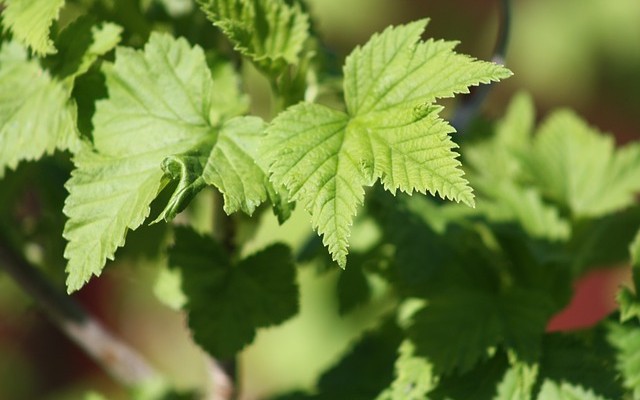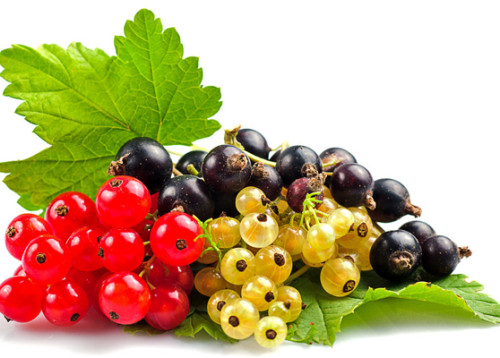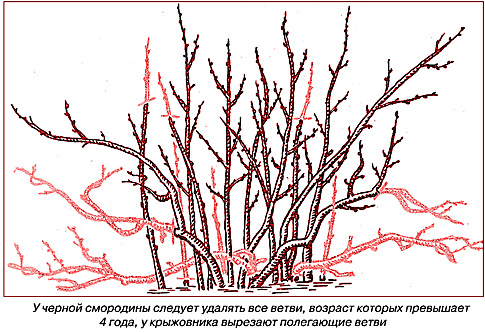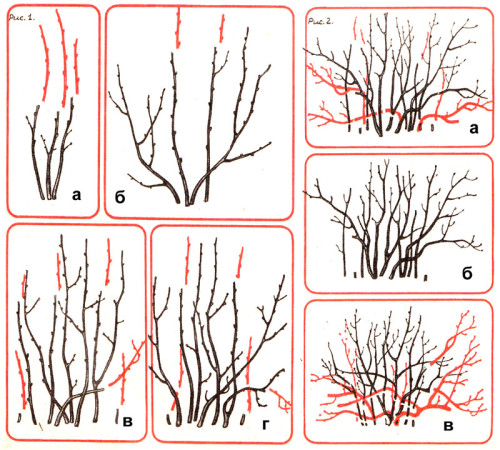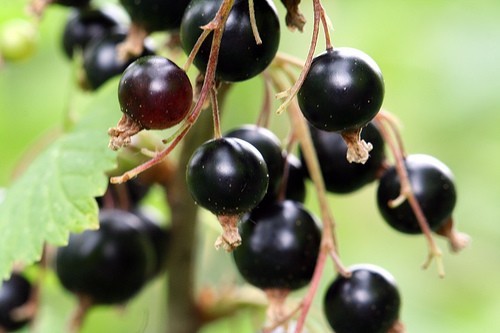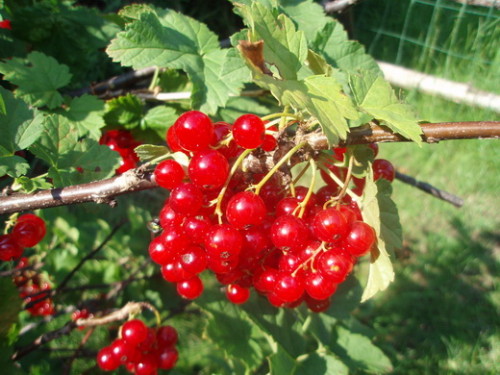Currant - a long-term shrub requiring the right care and location. The stronger the site will be selected for it and the pruning procedure is manufactured, the sooner the plant will begin to be fruit.
Content
Why do you need cropping currant?
Spring cropping currant provides high-quality and rich harvest, an annual increase (the formation of new roasting shoots). In addition, it is a sanitary measure - patients and weak shoots are removed, which can lead to the death of the plant.
Rules and Stages Crimping Currants
Cocking currant trimming, it is necessary to take into account the productivity and durability of "flouries", as well as the main skeletal branches. So the most abundant harvest carry stronger growths (25-40 cm) of the 1st and 2nd orders of branch.
Belated shorting leads to the loss of a large amount of juice that weakens young shoots. If you did not have time to do pruning on time, leave this procedure for the next year.
Different types of currant are shortened in different ways. This process is similar only at the beginning when broken, intertwined and growing branches are removed.
Currant trimming: stages
1. Trimming young seedlings.
This type of plant treatment pursues the main goal - the formation of the bush.
Peculiarities:
- thanks to the increase in roasting shoots, the bush is formed faster;
- annually should leave 3-4 strong escape, arranged without shading;
- interlacing, weak, wrong location shoots are cut down to the ground;
- formed bush should have an equal number of branches of each age. Thus it is desirable to 1-2 year olds were greater and less perennial 1-2.
2. Maintenance pruning currant bushes.
The goal - to maintain age and of the proportion of shoots in the bush. This is achieved by removing the perennial branches or those that have a small one-year increments.
Peculiarities:
- a substitution, shoots should be left the same number of radical. If they produced little, apart from the perennial branches, remove 1-2 younger;
- this type of pruning is created during the entire life of the plant;
- in some cases with perennial branches cut off the top part with a small increase. This is done to the nearest lateral branch;
- during maintenance pruning cut broken, sick, lying on the ground branch.
Pruning blackcurrant
Rules:
- this kind of culture lays the yield on the shoots of the first and second year of life;
- perennial branches (aged 5-6 years) are cut at ground level;
- the older branch, the lower the fruit on it to be;
- perennial branches can be identified by a small gain and cracked crust.
Pruning currant spring: the scheme:
- Immediately after planting currants cut off the whole branch. Retained few kidney.
- The next year are pruned all the branches of the second order. 4-8 only retained on each kidney.
- In the third year cut the long-term and strong year-old shoots. This is done by 1/3. Removed as annuals weak shoots.
- 6-7 year old branches are cut to the ground. The plant is generated according to a certain scheme. The fruiting season in the bush should be 10-15 different ages perennial shoots.
A simple method of pruning blackcurrant
A more practical method offers Michurin Institute of Horticulture. It reduces to cutting new shoots blackcurrant bushes, whose gain is 15 cm.
Basic principles:
- Pruned plant in early spring (before bud break), in summer or in autumn (immediately after harvest). Do it focusing on the new method of cultivation, in which the first 5-6 years after planting, the plants do not form. During this period, are 2-3 crops.
- Next, create a trimming bushes to ground level. After collecting the berries mowing is done through a series. The branches were removed and burned.
- After trimming under the bush, organic and mineral compositions are made, herbicides are involved.
- Next year, the plant gives a large number of shoots. Of these, they leave the 16-20 best, the rest are removed.
- After collecting several crops, the bushes are uprooted.
Notes:
- regardless of the type of trimming and arrangement of the bush, it is necessary to remove branches in the first spring after landing with the leaving 2-4 kidneys;
- on the densestore branches creates a summer piece of shoots. This is done to increase the laying of flowering kidney.
Crossing red currants
This type of currant gives a qualitative crop even on old branches and, unlike black, cuts off without shuffling of shoots.
Rules:
- Crossing should be carried out every year in early spring.
- Red currant has a weak increase. Only 3-4 branches are left.
- Only those with more than 8 years are removed from old branches.
- In some cases, young shoots are thinned. This is done if the plant thickened very much.
- On this culture there should be no more than 15-20 branches of different ages.
- After processing the bush, the sections are lubricated with a garden boiler.
- When forming red currants, it is not necessary to add the tops of the branches.

